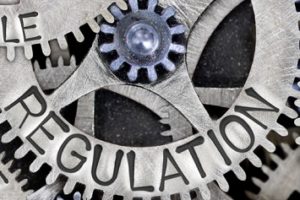Small businesses accounted for more than 60% of net new jobs created between 1993 and mid-2013 in the United States. In recent years, very small firms—those in the 20- to 499-employee category—have led job creation. But they face compliance challenges that larger companies with more resources do not.
In order to help small businesses participate effectively in the regulatory process, and in order to minimize the negative impact of safety and environmental regulation on small businesses, Congress passed the Small Business Regulatory Enforcement Fairness Act (SBREFA) in 1996. Here’s how SBREFA can help your business.
SBREFA
The SBREFA gives small businesses:
- More influence over the development of regulations;
- Additional compliance assistance for federal rules; and
- Additional mechanisms for addressing enforcement actions by agencies.
The 1980 Regulatory Flexibility Act (RFA) requires agencies to take steps to collect input from small entities on regulations and to determine whether a rule is expected to have a significant economic impact on a substantial number of small entities. It also requires federal agencies to identify alternative regulatory approaches for small businesses, small governmental jurisdictions, and nonprofit organizations.
Unfortunately, federal agency compliance with the RFA was inconsistent, and there was no judicial enforcement mechanism. The SBREFA created a mechanism for judicial review of agencies’ compliance with the RFA. Small businesses that are adversely affected or aggrieved by an agency’s failure to comply with the RFA may seek review of the rule in court.
Under the SBREFA, judicial review applies to:
- The final regulatory flexibility analysis, including the agency’s efforts to evaluate alternative regulatory approaches and reasons for rejecting or accepting them;
- The agency’s effort to collect comments from small entities through a variety of mechanisms;
- The agency’s decision to certify that a rule will not have a significant impact on a substantial number of small entities and the factual basis for the certification; and
- The agency’s compliance with a requirement for periodic reviews at the 10-year anniversary of every rule or the enactment of the 1980 law, whichever is first.
The SBREFA also describes the steps an agency must take to minimize the significant economic impact on small businesses.
EPA and OSHA Regulatory Review Panels
The SBREFA requires an extra step for the U.S. Environmental Protection Agency (EPA) and the Occupational Safety and Health Administration (OSHA) in the development of regulations. Specifically, the SBREFA requires that the agencies receive input from affected small businesses through SBA’s Office of Advocacy before proposed rules are published.
When an EPA or OSHA proposal is expected to have a significant impact on a substantial number of small entities, the agency must convene a panel of employees from the agency, the Office of Advocacy, and the Office of Management and Budget to review a copy of the draft proposed rule and related agency analyses under the Regulatory Flexibility Act.
The panel also will collect advice from small business representatives and submit a report to the agency within 60 days of convening of the panel. The agency will then review the report, make any appropriate revisions to the rule, and publish the proposed rule with the panel report as part of the record.
Congressional Review
Before any new rule goes into effect, federal agencies are required by the SBREFA to forward the rule to Congress for review. Major rules cannot go into effect until the congressional review is complete.

